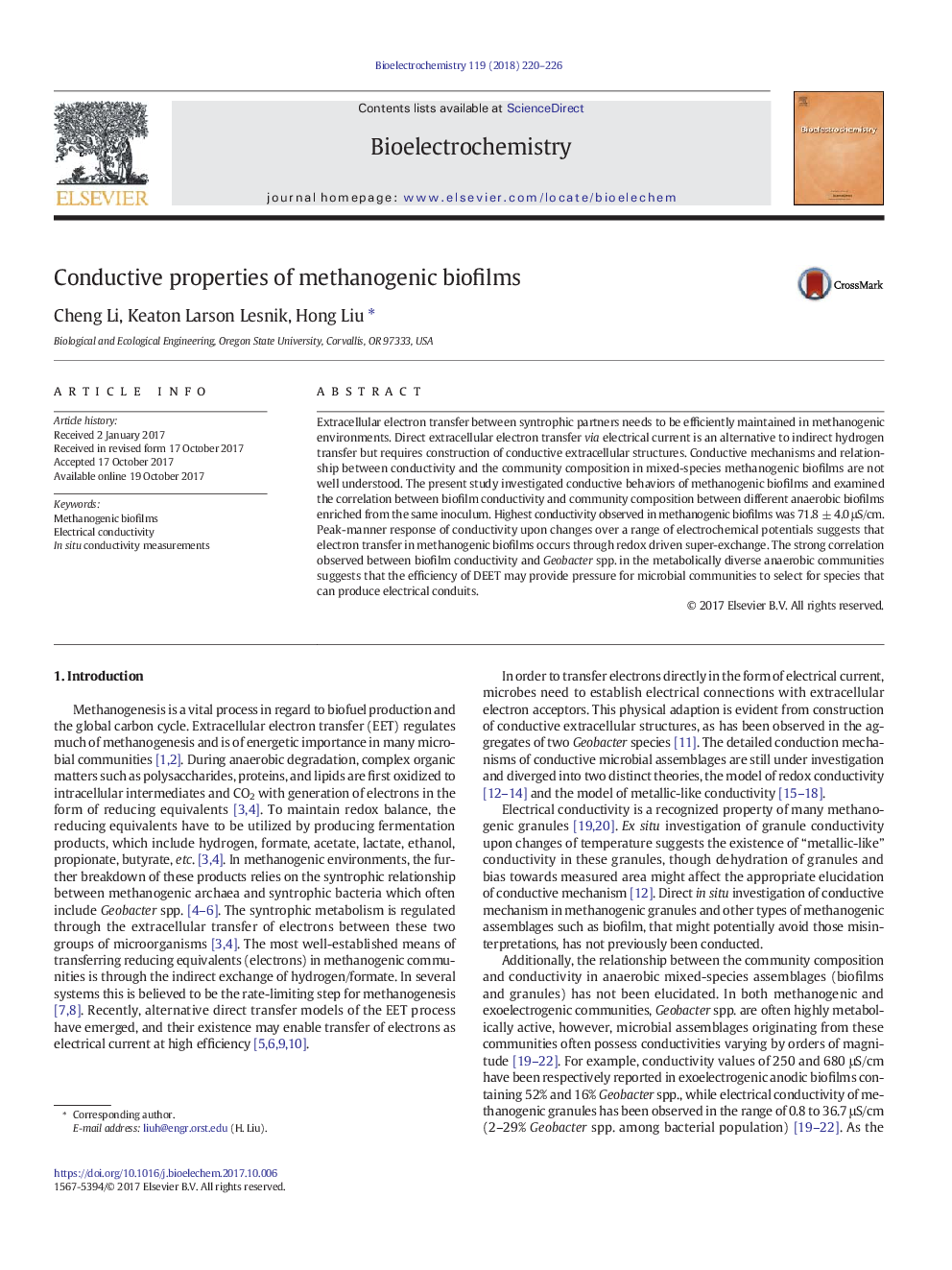| Article ID | Journal | Published Year | Pages | File Type |
|---|---|---|---|---|
| 7704735 | Bioelectrochemistry | 2018 | 7 Pages |
Abstract
Extracellular electron transfer between syntrophic partners needs to be efficiently maintained in methanogenic environments. Direct extracellular electron transfer via electrical current is an alternative to indirect hydrogen transfer but requires construction of conductive extracellular structures. Conductive mechanisms and relationship between conductivity and the community composition in mixed-species methanogenic biofilms are not well understood. The present study investigated conductive behaviors of methanogenic biofilms and examined the correlation between biofilm conductivity and community composition between different anaerobic biofilms enriched from the same inoculum. Highest conductivity observed in methanogenic biofilms was 71.8 ± 4.0 μS/cm. Peak-manner response of conductivity upon changes over a range of electrochemical potentials suggests that electron transfer in methanogenic biofilms occurs through redox driven super-exchange. The strong correlation observed between biofilm conductivity and Geobacter spp. in the metabolically diverse anaerobic communities suggests that the efficiency of DEET may provide pressure for microbial communities to select for species that can produce electrical conduits.
Related Topics
Physical Sciences and Engineering
Chemistry
Electrochemistry
Authors
Cheng Li, Keaton Larson Lesnik, Hong Liu,
